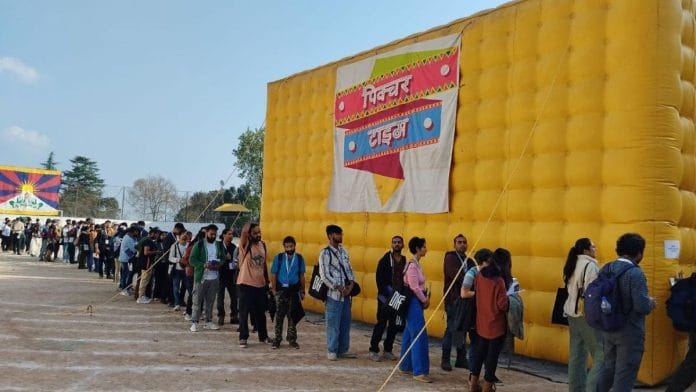Everyone in the small sleepy town of Nagaur in Rajasthan was convinced that their theatre would ‘fly away’. Motorists would stop in the middle of the road and yell, “The cinema hall is a balloon”. From the outside, it looked like an inflatable bouncy castle.
That was a year ago. Today, the single-screen mobile theatre is an entertainment hot spot with people lining up to see the latest releases from Stree 2 to Bhool Bhulaiyaa 3. It may look like a cross between a ‘bouncy castle’ and a tent cinema once popular in rural areas. But inside, it delivers an authentic multiplex experience–with Dolby digital surround sound, comfortable pushback chairs, sharp picture quality, and the redolent aroma of popcorn. And a ticket costs just Rs 200.
“When I first saw the quality of seats, I assumed the tickets would cost Rs 500. I was scared to even ask about the price; I was carrying only Rs 400, after all. However, it was just Rs 200 for one ticket and Rs 80 for popcorn. And I still had some money left after,” said a college student in Nagaur.
The inflatable cinema hall is Sushil Chaudhary’s ingenious answer to the death of single-screen theatres in small-town India. The founder and CEO of Delhi-based Picture Time Digiplex is bringing the multiplex experience to small towns from Asifabad in Telangana to the high altitudes of Ladakh.
The goal of Picture Time Digiplex is not competing with multiplexes but creating an alternative space that expands the access to people in small towns and semi-rural spaces.
—Sushil Chaudhary, founder of Picture Time
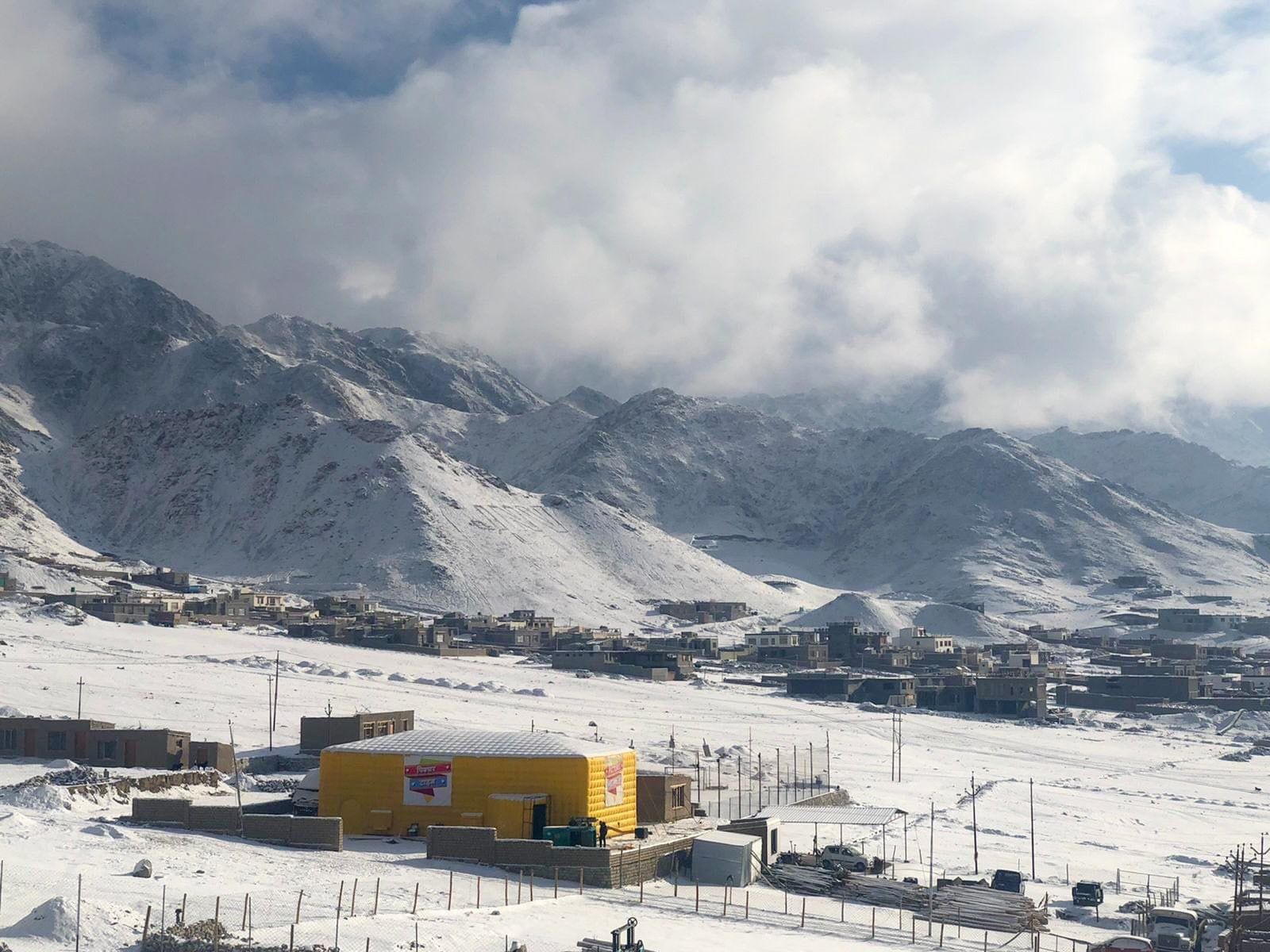
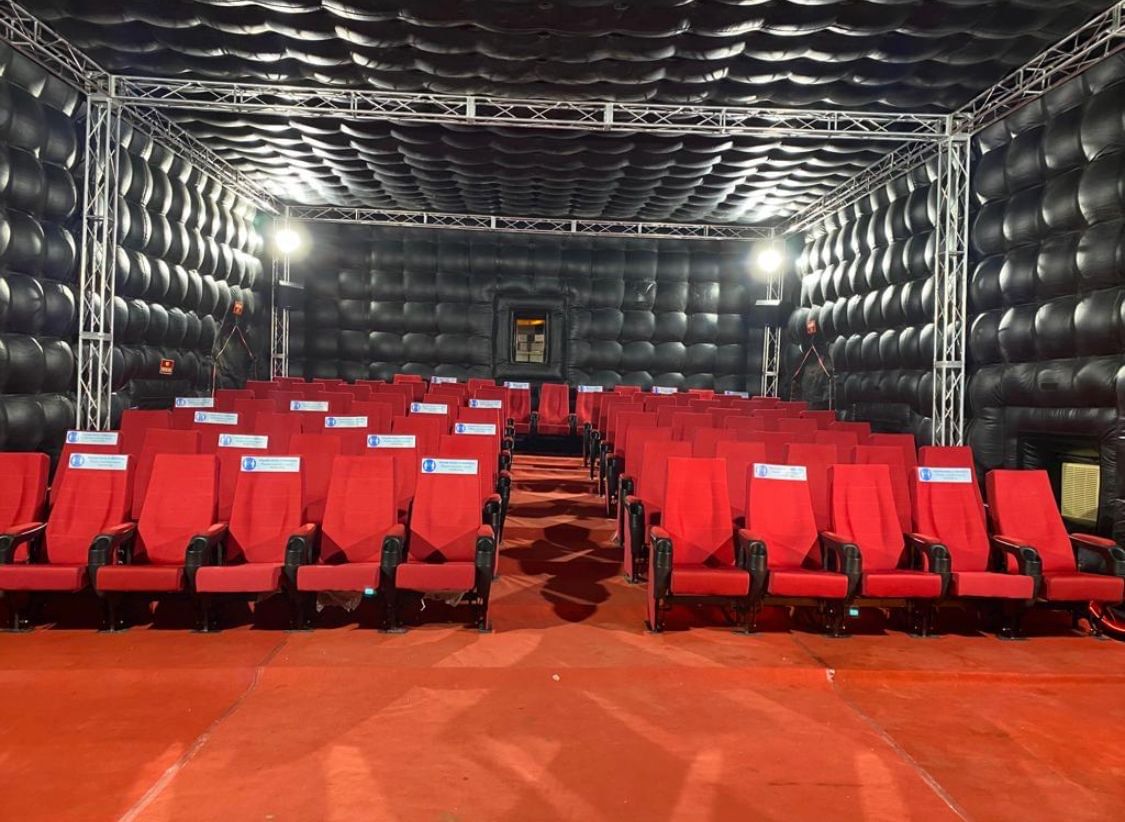
Ever since he patented the Mobile Digital Movie Theatre (MDMT), he has set up over 21 halls in India (39 before Covid-19). Nagaur is his second venture in Rajasthan after Sardarshahar, where he started operations in 2023.
“The goal of Picture Time Digiplex is not competing with multiplexes but creating an alternative space that expands the access to people in small towns and semi-rural spaces,” said Chaudhury. His inflatable cinema halls only take four days to set up.
Picture Time Digiplex works on the principle of easy portability and lightweight materials that can be transported to any corner of the country and quickly assembled. This has also helped the inflatable theatre chain join hands with the Dharamshala International Film Festival and conduct screenings of films like Payal Kapadia’s Cannes Grand Prix winner, All We Imagine as Light, Dibakar Banerjee’s Tees and Shuchi Talati’s Girls Will Be Girls at an altitude of 5,000 feet in Ladakh. It is also the official screening partner of the 55th International Film Festival of India, currently being held in Goa. One of the screens at this festival will be mobile, travelling from North to South Goa.
For Chaudhary, watching a film in a theatre isn’t just entertainment – it’s a fundamental part of life, as essential as any basic necessity. And he wants to bring the experience back to India, one city at a time. He aims to open theatres in 40 sites across India in the next five years. But for now, all his attention is on the grand opening of the flagship theatre near Delhi airport next month.
“We have all grown up watching movies and being influenced by them massively in India. I always say that Amitabh Bachchan has had a bigger influence on my life than Mahatma Gandhi.”
When doubt gave way to success
Investments from local entrepreneurs have played a huge role in the setting up of Picture Time Digiplex. In Nagaur, for example, businessmen Bharat Choradiya and Ranjeet Devra invested Rs 20 lakh in total, while Picture Time invested Rs 55 lakh. Such collaborations have helped businesses across cities become part of the venture’s growth story and reap monetary benefits.
As per the Picture Time business model, investors can funnel a minimum of Rs 20 lakh in the venture and become revenue-sharing partners. They are entitled to 50 per cent of the profits made from ticket and food sales and can hire local employees of their choice. This revenue structure offers a clear return on investment and generates employment for small-town residents.

But getting investors to bet on the mobile theatre hasn’t been easy for Chaudhary. Initially, Even Choradiya and Devra were hesitant to invest at first.
“Our families were saying things like ‘If you want to build a theatre, build a concrete one. What is this Mickey Mouse-type building?’,” Devra recalled.
The family’s scepticism wasn’t unfounded. From June to August of this year, the town experienced severe dust storms and heat, making inflatable theatres seem like an impractical idea.
Even the District Collector couldn’t get on board with it. He called Choradiya and Devra to his office just before the theatre’s opening on 12 November last year. He was concerned that there was no other construction at the site except for a basement.
“What am I supposed to inaugurate?” he asked, confused.
Choradiya and Devra called up Picture Time in a panic. The company’s IT and logistics head, Rajesh Chauhan, assured them that it would take just four days to set it all up. And he delivered.
The red-coloured theatre, designed for both comfort and functionality, opened with Tiger 3. The insides were as luxurious as traditional multiplexes–200 seats, two split air conditioners, four massive portable ACs, a ticketing booth, and a food and beverage counter.
Curious townspeople who had initially mocked the venture began flocking to the inflatable hall to watch the Salman Khan and Katrina Kaif-starrer while gorging on large popcorn tubs that cost a fortune otherwise.
Picture Time’s first superhit screening in Nagaur, however, was Animal (2023). It went houseful for two weeks and even prompted a late-night show that ended at 1:30 am.
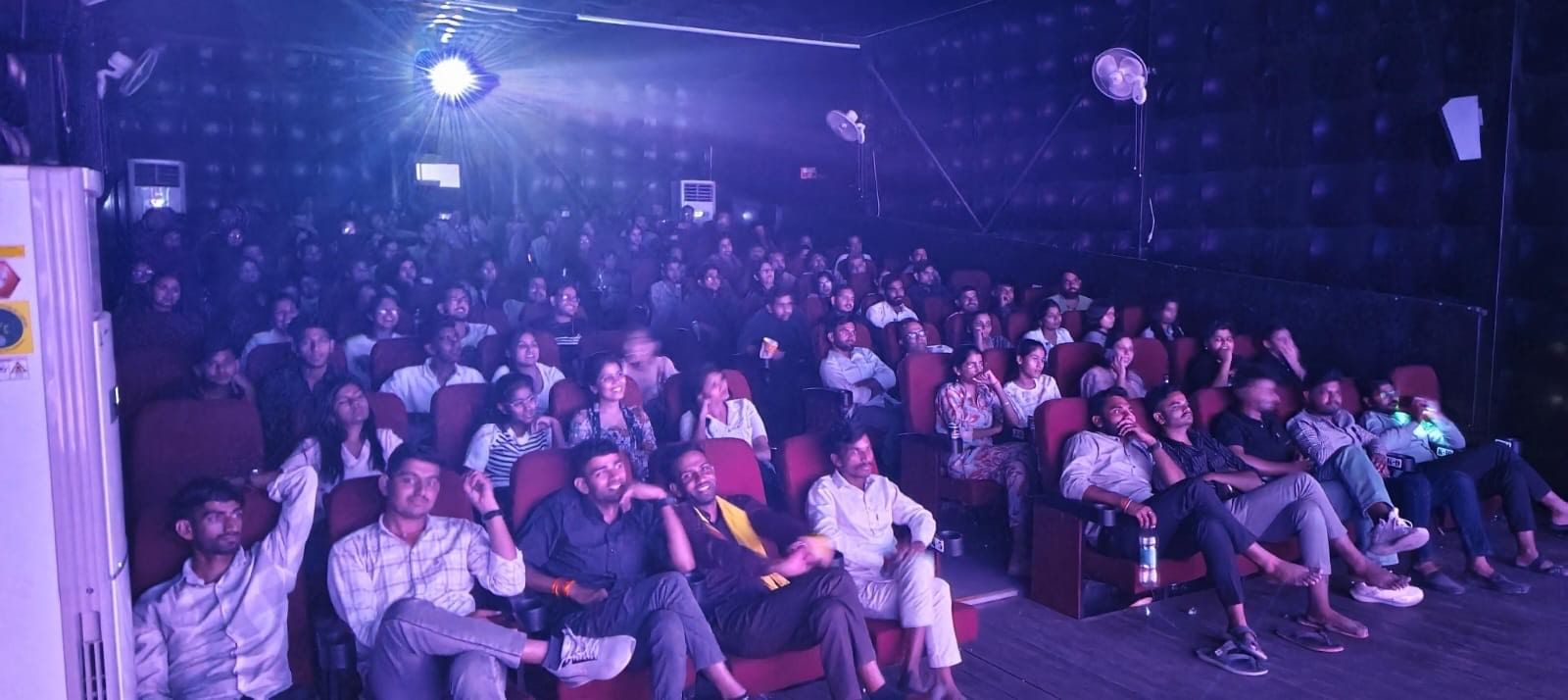
“What surprised us was that even families were coming in to watch movies late at night. It was a new thing to witness,” said Devra, adding that women and men turned up in equal numbers.
The nearest multiplex for Nagaur’s residents is located three hours away in Jodhpur.
“We never missed a single movie growing up. However, that changed when single-screen theatres began shutting down. Now, we are cinema buffs again,” said Naveen Mahatma, an audience member. Viewers can now enjoy the latest movies on the first day itself–on the big screen and not the mobile phone.
Picture Time isn’t the only player in the game, though. Another venture called Lucky Cinema has been following in its footsteps. A collapsible theatre that’s part of the K Sera Sera miniplex chain, the igloo-like hall initially failed to obtain a movie-screening licence. Largely unused, it would occasionally host birthday parties and events. But today, it also screens big-budget Bollywood films.
After Picture Time obtained a single-screen licence last year, Lucky Cinema followed suit and began showing some movies. The hall, which is much smaller and hasn’t moved from its place in many years, can seat only about a hundred people and has a 12 x 10-foot screen. Moreover, the foam-lined plastic chairs aren’t nearly as comfortable as the recliners at Picture Time’s inflatable theatre, which can seat 200 people.
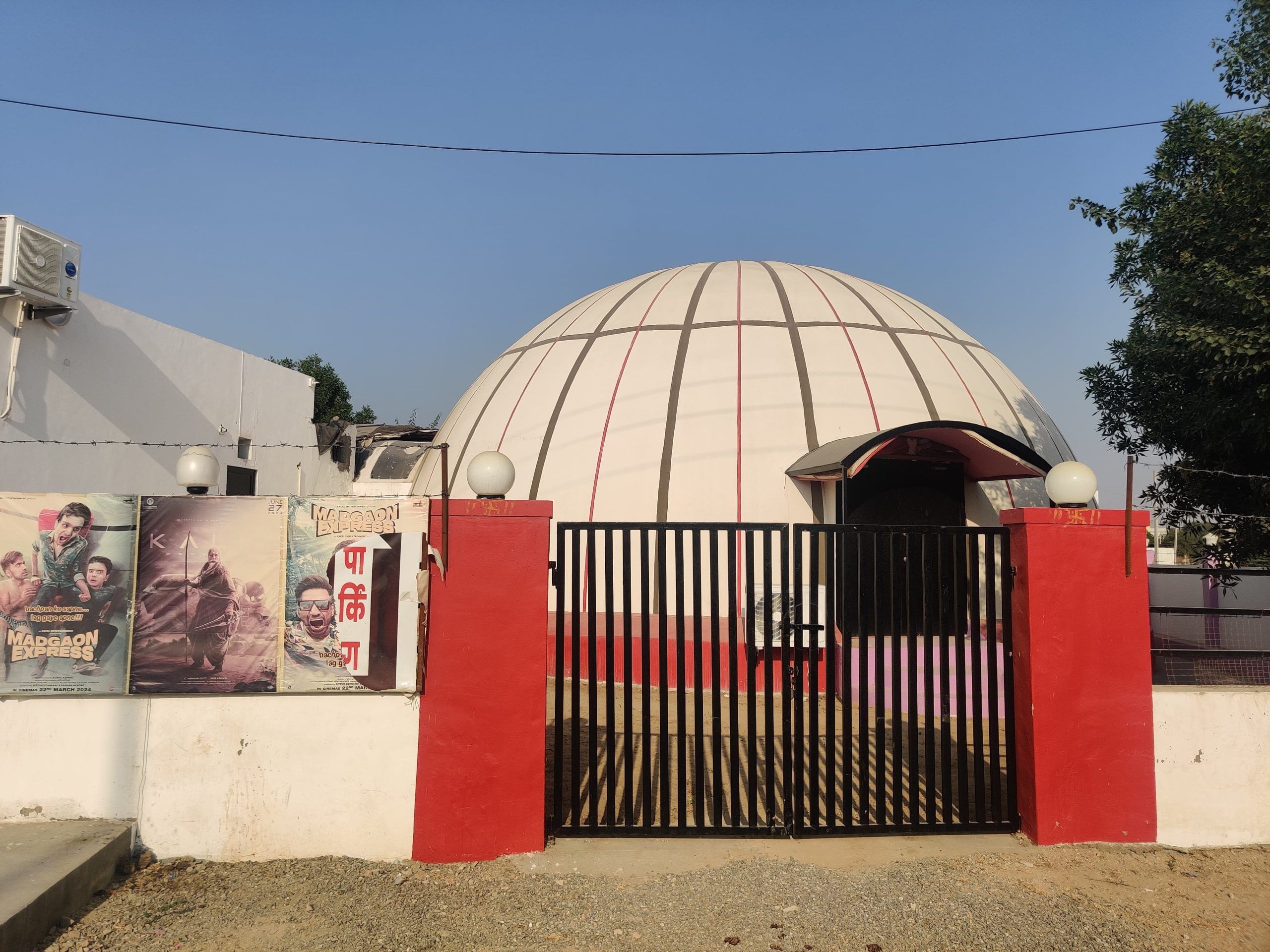
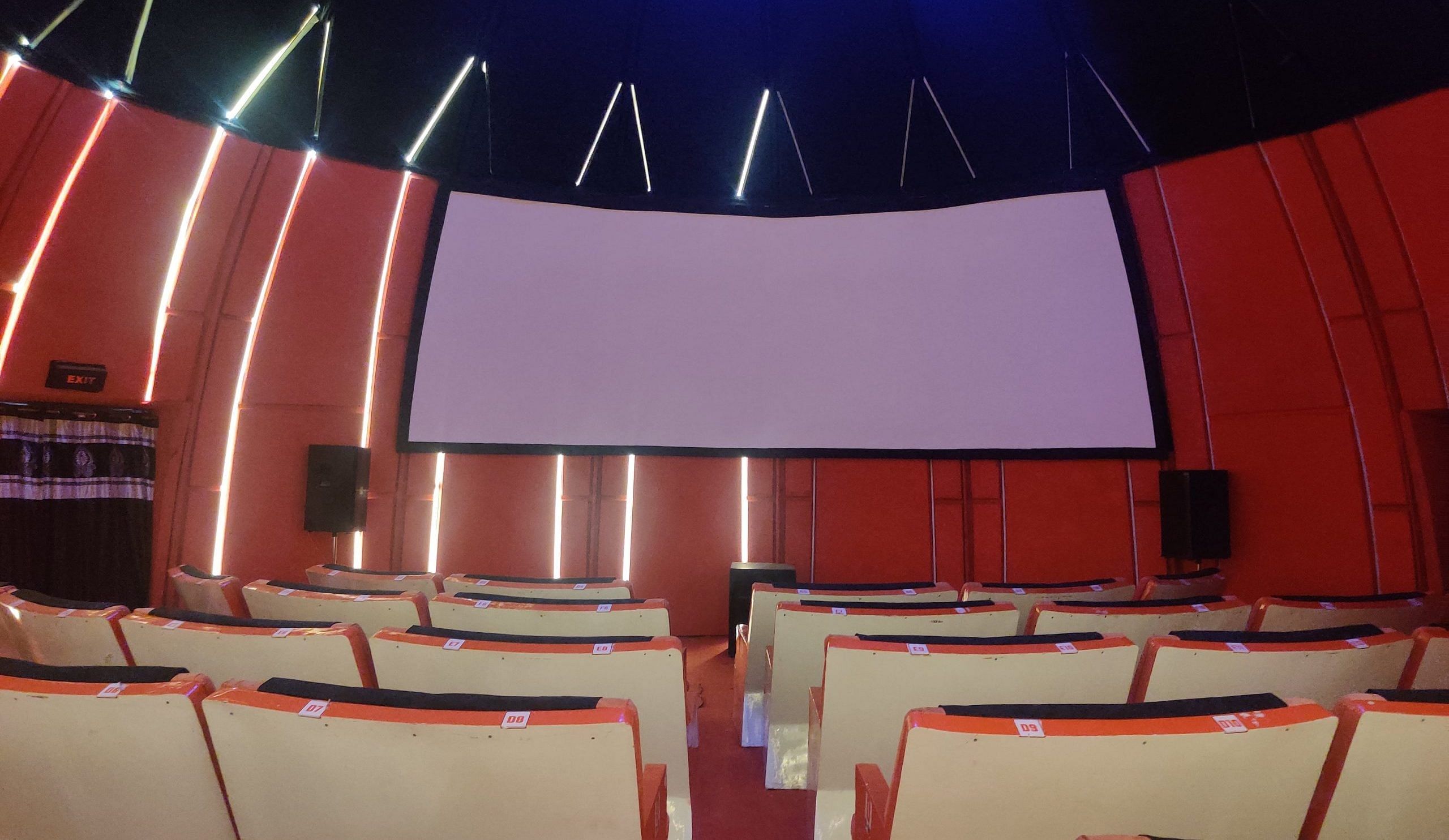
There’s also the Lakshmi Tara Cinema, the sole surviving brick-and-mortar single-screen theatre in Nagaur. Located next to a noisy neighbourhood filled with vegetable vendors, grocery shops and moving vehicles, it looks almost deserted. Now, it only screens movies with big stars and budgets.
“There are just three of us working here, one manning the projection room and one at the ticket counter. We mostly get people from low-income groups,” owner Ramesh Jangid told ThePrint. The tickets start from Rs 70, and it has the classic set up of balcony, gallery and box seats.
Online reviews show that the sound quality is not good, and the old coolers fail to keep the massive 600-plus-seat hall adequately cool. The owner is aware of this but lacks the funds to make many changes.
“We do have plans to transform this into a better hall in the future,” he said with hope in his voice.
Also read:
The beginning–technology to patents
The Picture Time head office in Delhi boasts a team of 20-odd people who are all working tirelessly to popularise the company’s inflatable theatre concept.
Chaudhary and his team started their research on mobile theatres in 2015, They drew inspiration from the Armed Forces – who often have small movie theatres on their bases – and the ‘jatra’ (travelling folk theatre) performances in Bengal.
As urban development planning took off, cinemas became part of every new colony. But as spaces started shrinking, so did the space for theatres.
—Sushil Chaudhary
Mobile entertainment isn’t new, though. Ford patented a concept in 2016 to turn driverless cars into entertainment units, while Mumbai-based K Sera Sera has been creating igloo-like halls such as Lucky Cinema.
Chaudhary, however, sought to expand the concept, enhancing aspects such as technology and penetration.
“As urban development planning took off, cinemas became part of every new colony. But as spaces started shrinking, so did the space for theatres,” said Chaudhary. He realised that if he could come up with something that would cost less than a crore to set up and wouldn’t get stuck in red tape, his idea might take off.
Chaudhary was further inspired by PVR managing director Ajay Bijli, a known “disruptor” in the country’s cinema viewing space, and the tent ‘movie theatres’ mostly found in South India. He intended to marry the high-tech luxury of PVR and INOX with the affordability and convenience of travelling cinemas.
An engineer and tech entrepreneur, Chaudhary spent a year and a half developing a space that enabled Dolby surround sound and proper acoustics without a separate acoustics wall. The structure was also fire-resistant, with balanced air circulation that ensured resilience against high temperatures and in turn the safety of viewers.
His inflatable hall could be fitted comfortably in the back of a large truck, allowing three crew members to travel with it and set it up in different locations.
Once the design was fully developed, Chaudhary decided to get patents. He secured the first patent on 11 November 2020, for a process involving the assembly of a collapsible/inflatable mobile theatre. The second patent, granted on 10 May 2024, covered structural improvements in the mobile theatre system.
He then proceeded to develop the Picture Time app, where users could directly book their show of choice. He wanted to save on the convenience fee charged by platforms such as BookMyShow to keep the ticket prices as low as possible. Soon, Chaudhary and his team began setting up theatres in Chhattisgarh, Odisha, Jharkhand, Uttar Pradesh, Madhya Pradesh and Maharashtra. By 2019, there were 39 such theatres.
“We imagine people in tier 3 and 4 towns will not be able to pay the ticket prices, or not understand what Dolby sound is. But that is far from true. All they are waiting for is facilities, and they come to watch,” said Chauhan.
He even got S Rajamouli to watch his movie RRR at the Picture Time theatre in Asifabad. “One of the characters in the film, played by Jr NTR, is inspired by tribal activist Komaram Bheem, who was born in modern-day Asifabad. So he also got interested in making that drive from Hyderabad and watched the film,” said Chaudhary.
Impressed with his experience, Rajamouli had an idea he promptly conveyed to Chaudhary. “I will have my films released directly into these theatres if a sizable number comes up. I can charge extra prices, which happens with my films, and fans pay. But I do not get any share [of that revenue],” Chaudhary recalled Rajamouli telling him. This fit right into his idea of helping filmmakers release their movies with lesser investments, and have greater control over the profits made through ticketing sales.
Also read:
Setbacks & future plans
Ladakh’s scenic locales lacked a cinema hall for the longest time – even though it was the location of choice for popular Bollywood films like Three Idiots (2009). It got one only in 2021, when Picture Time installed its inflatable hall there during the first edition of the Himalayan Film Festival. Pitched at 11,562 feet, this inflatable theatre in Ladakh is now the world’s highest-altitude cinema hall. Stree 2 had 28 shows there during the first week of its release.
“People there [in Ladakh] have the money to spend on entertainment, and even late at night, people come to watch films, be it snowing or in the summer,” said Chauhan.
There were, however, some major setbacks in Chaudhary’s inflatable hall operation. And Covid-19 was the biggest one of them. “We transformed our theatres into Covid isolation structures. We built 37 hospitals and 1,400 isolation wards and ICU wards around India. It got us good money, as well as a good name, and we could sustain the pandemic, when investments and releases were not there.” Despite making good money in the medical sector and the potential to earn even more, Chaudhary stuck to his cinema dream and restarted.
Expanding on his original idea, he allowed his theatres to be alternatively used as multicultural spaces conducive to government outreach projects and online classes. Furthermore, he allowed people to hold private screenings for their families, or groups of school children.
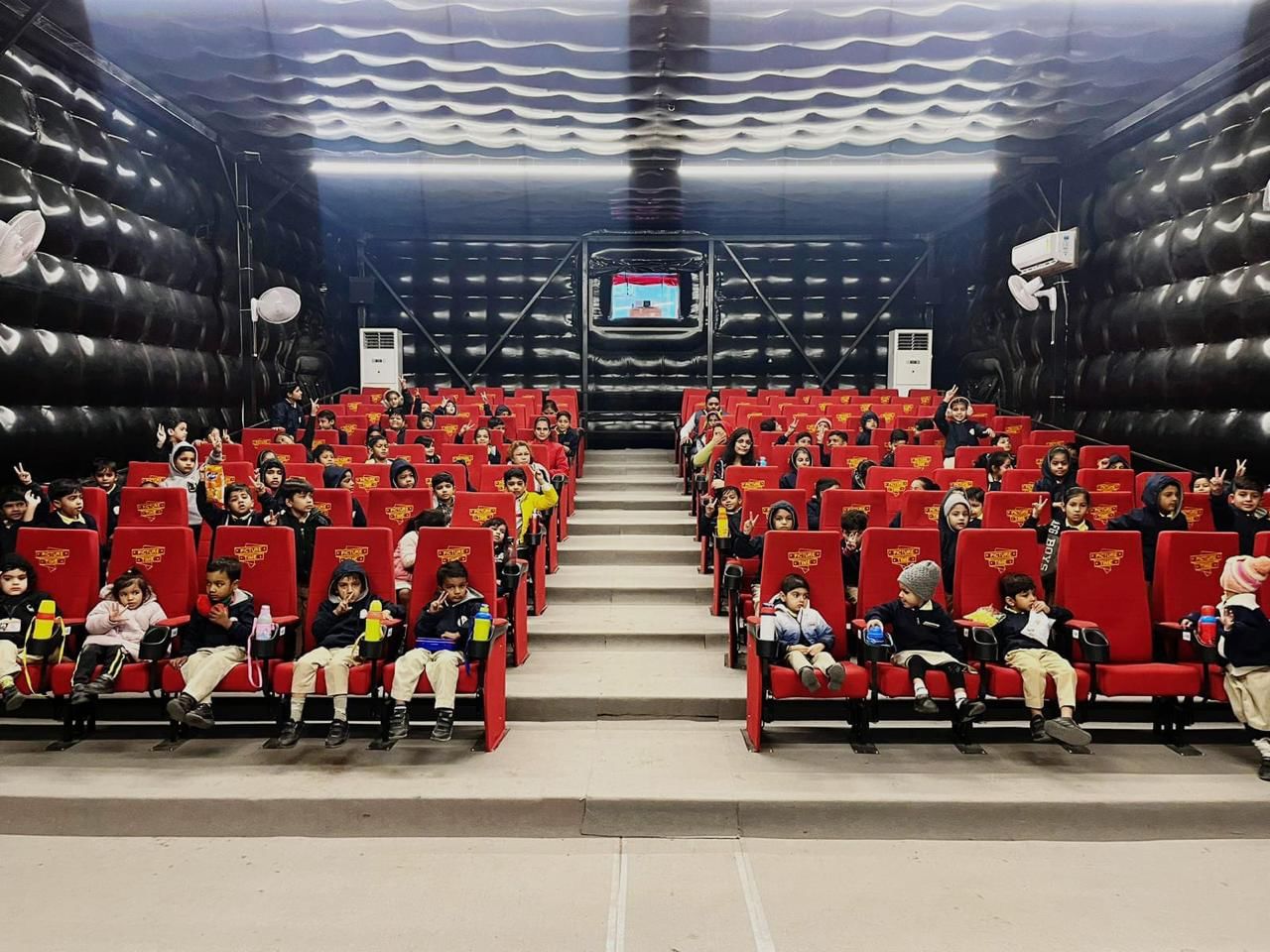
Picture Time’s next plan of action was to build a network of inflatable theatres for defence personnel, especially those in inaccessible spaces. “The plan is to get these theatres for not just entertainment in bases where the nearest hall or market is far away. Through these theatres, we want to give these personnel and their families the first day, first show experience at the bases,” said Picture Time’s Aradhika Kaushik.
Meanwhile, in Nagaur, the most anticipated release is Pushpa 2. Residents are eager to know if the film, starring Telugu superstar Allu Arjun, will be released here on the same day as the rest of the country. Either way, they won’t have to turn to illegal movie download sites or travel three hours to watch their favourite stars on the silver screen.
“On our page, we run polls on which movie to get next, and the entire city [of Nagaur] is waiting for Allu Arjun’s film. They want to be able to have conversations with their friends in big cities about the plot and songs,” said Devra.
(Edited by Zoya Bhatti)



